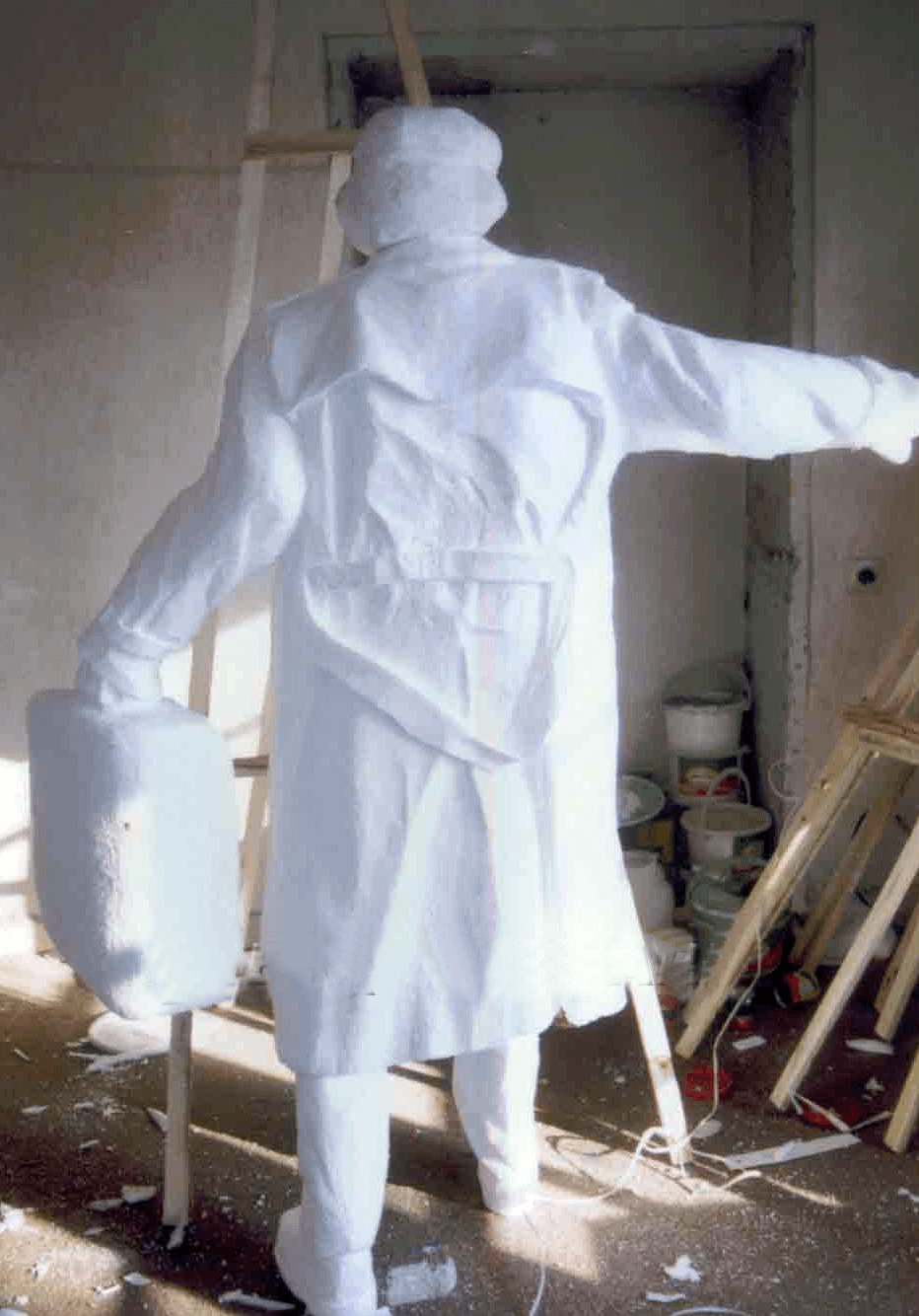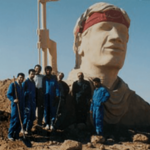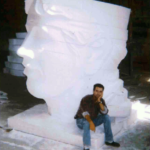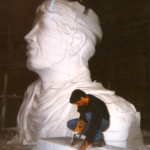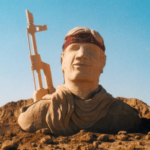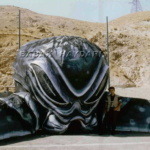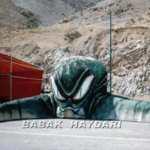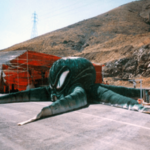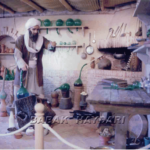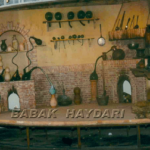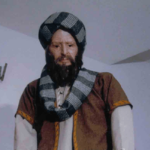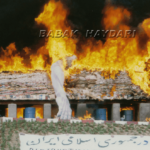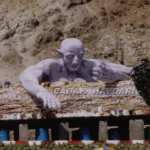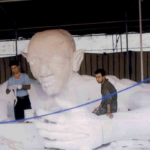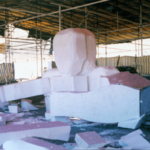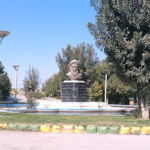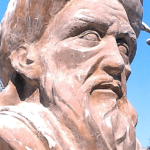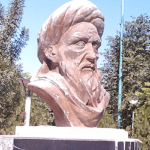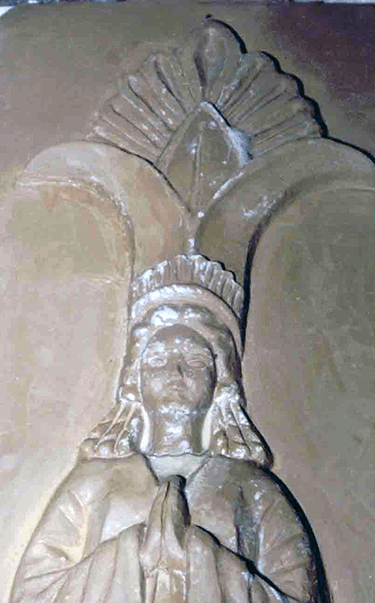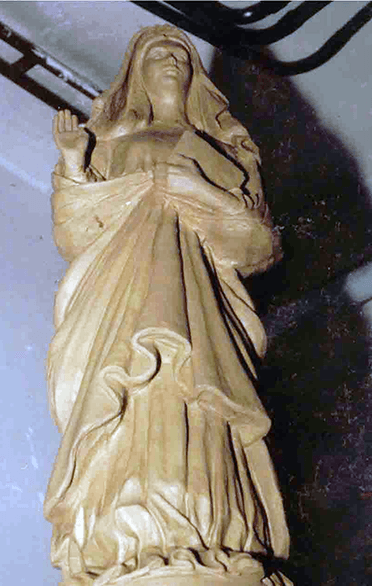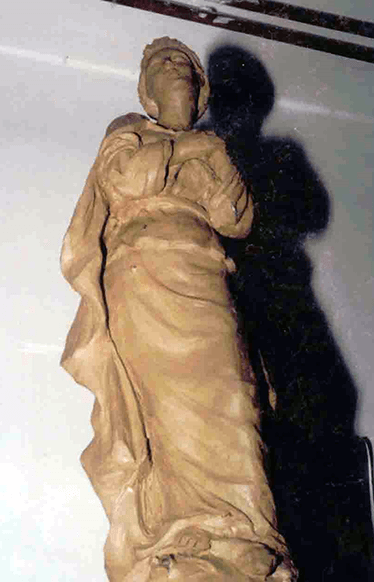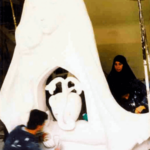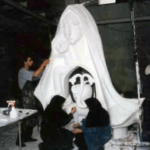Movie figure statue
Name of the statue: Behind the head of Reza Zhiyan
Place of installation: Tehran – film location
Performed by: Babak Heidari, Kambiz Horsan
Size: Normal (Human)
Material: Unolite foam
Implementation time: 2003 (1381)
Today, digital and computer effects are used to implement special effects in movies, but in the past, these special effects needed to be physically created and filmed.
This order was given for use in a movie where the hero of the story had to explode in a part of the movie after moving away from the camera, so only behind the actor was enough to make the effect effective.
With a piece of 10 cm thick foam, we made a relief of the back of the actor’s head, and for better standing, we cut one of the legs and glued it in front.
This statue was later painted and used by the set design team at the filming location, but I have not seen this movie over the years and it is not clear to me whether any stage designer was satisfied with the image it created.
Martyr statue
Name of the statue: Martyr
Place of installation: Isfahan
Designer: Babak Heidari
Performed by: Babak Heidari
Height: 5 meters
Material: Reinforced Unolite foam
Implementation time: 2001 (1380)
After the Iran-Iraq war, the people who participated in the war and defended the country’s independence and were killed in this way were and are always respected by the people. Martyr is a title given to these people due to the ideological nature of the Iranian government, and the name of this statue refers to it.
This huge sculpture was a big challenge, and it was the first experience of its kind for me, from construction to transportation and installation. For the design, by removing the eyes, I tried to make the face of the statue more spiritual and to move away from the resemblance to a specific person, so that it would be German for all martyrs.
Considering that this statue had a temporary function and it was not supposed to be used for a long time, and also the statue had to be transported from Tehran to Isfahan, so the Unolite foam material with adhesive and fabric cover was the best option, and I have already had the experience of making such a statue. I had some, but the dimensions of this statue were much bigger than the previous ones.
It was predicted that the statue would be executed in several pieces and connected on the spot after being transported.
To make this statue, more than 20 large blocks of Unolite foam were used and the layers were installed and cut and carved. This statue was built in 30 days. I was accompanied by my assistant Mohammad Reza Shadmani in making this statue. And it was built in a large shed in the east of Tehran.
Apparently, due to security issues, which I later found out, the location of the installation was not announced in advance, and after arriving at the place, I realized that in order to see the statue better, an artificial hill should be created as a base for the statue, and using the military facilities available in the place of this work was done and finally the statue was installed and the customer’s feedback showed their great satisfaction.
It is interesting that along with this statue, a figure statue of a warrior was also made, which received good feedback, but under the shadow of the big statue, I don’t even have a single photo of it, and this is while this statue was repeated for the second time in Tehran, and there is no photo available from Second statue too.
Drug monster statue
Statue Name: Drug Monster
Place of installation: Tehran – the ceremony of destroying confiscated drugs
Designer: Babak Heidari
Performed by: Babak Heidari, Kambiz Horsan
Size: 16 meters wide and 5 meters high
Material: Cloth, sponge and pipe
Implementation time: 1999 (1378)
After the spectacular success of the drug demon statue and the reflection it had in the international media and the United Nations. The officials came to the conclusion that the use of artistic and visual effects will help them a lot, and for the second year, an order was given to make a monster for this ceremony.
In order not to repeat the design, we decided to change the character from the form of a demon to a monster like an octopus, and we made the size much bigger to be more visible. which was supposed to be placed on a skull-like platform that was filled with drugs and was coordinated with the explosion and fire team, which used smoke grenades and smoke from the head of the octopus through pipes placed inside the statue. colored balls are removed and then the material is burned along with the monster. All these predictions went well and at the same time as the ambassadors and representatives of the countries arrived, unfortunately, due to the mistake of one of the military group who was responsible for lighting the fire, an accidental connection occurred and the statue and drugs were set on fire before the ceremony started. And unfortunately, lack of preparation. The media did not take any photos of this statue and its burning.
Although this sculpture failed to get a proper feedback, but making a large sculpture with the structure of plastic pipes and using sponge and fabric was a very sweet and successful experience.
Alchemist statue
Name of the statue: Alchemist and ancient chemistry environment
Place of installation: Tehran – Science and Astronomy Museum
Designer: Babak Heidari
Performed by: Babak Heidari
Size: Natural size
Material: wax
Implementation time: 1998 (1377)
In a period after years of war and subsequent reconstructions, attention to the construction of cultural and scientific centers had flourished. And kambiz and I were very busy and we had constant orders and it was like we were working on several projects at the same time. Considering that there were two of us, this was possible.
A professor of Sharif University, introducing us to our previous clients, commissioned us for this project, which was supposed to be executed and installed in the new building of the Science and Astronomy Museum.
The subject of the project included the design and implementation of an environment for ancient chemistry, in which a statue of an alchemist or chemist of that time with a natural face would be installed in the middle. In front of the new chemistry section of the museum, there will be an informative comparison for the audience.
For this project, an independent structure was executed and covered so as not to damage the environment of the museum, and finally it was painted and patinated in an old local way. For the necessary equipment, other than the equipment that could still be purchased in the market, it was necessary to order from various craftsmen and the design of the equipment was designed and sent to be made by taking ideas from historical books, which included clay, glass and copper vessels.
The statue had to be made using a combination of wax and foam, and this was my first experience with this material, which was of course a common technique in anthropological museums, but the problem with most of these statues was that the place where the hair was planted was worn out over time and It was separated from the statue, so I ordered the beard and mustache of the statue to a young make-up artist who had good skills in making a poster, and the result was very good.
I also ordered the statue’s clothes from a movie tailor who had good skills in sewing such clothes. Finally, the body of the statue was executed with a combination of metal structure and Unolite foam.
The combination of the statue and its environment was also interesting for me, and my path to enter decoration gradually opened up, especially in the field of television, which continued for years.
The statue of the drug demon
Place of installation: Tehran – the ceremony of destroying confiscated drugs
Designer: Babak Heidari
Performed by: Babak Heidari, Kambiz Horsan
Size: 6 meters wide and 2.5 meters high
Material: Unolite foam
Implementation time: 1998 (1377)
Due to its neighborhood with Afghanistan, which is the largest producer of narcotics, Iran is exposed to the entry and transit of these narcotics, and narcotics trafficking has become an important issue, and in addition to the city and border police forces, there is also a deputy in the presidency to prevent it. It is done from entry and smuggling. On the twenty-seventh of June every year, the discovered drugs are burned and destroyed in the presence of representatives of different countries.
Since the cost of this operation is very high for Iran and even Iranian border guards are killed in this way, it was necessary that this destruction of discovered materials should be given more attention and Iran could receive international aid. Therefore, the headquarters of the fight against drugs asked us to propose and implement an idea. The result was the design and execution of a giant statue in the form of a demon or drug monster, which was set on fire along with drugs and was a sign to destroy the drug monster.
This sculpture was assembled and painted with Unolite foam in 3 days, which was the fastest execution of a large sculpture for me.
The burning photo of this statue on the cover of the UN bulletin showed the success of this idea, and thanks to the efforts of the officials of that organization, Iran was able to receive significant aid and the use of these statues was repeated for 3 consecutive years.
The statue of Sheikh Koleini
Name of the statue: Sheikh Koleini
Installation location: Hasanabad city, Fashafuye
Designer: Babak Heidari
Performed by: Babak Heidari and Kambiz Horsan
Height: 2.5 meters
Material: concrete
In 1995 (1373), an order to build Sardis was offered to us by a sheikh named Koleini from a city municipality near Qom by a student. This city is located on the way to this person’s tomb, and it seems to be specialized in religious sciences, hadith and narration, and has a famous book on hadith.
It was a good opportunity to test our work and study experiences with a relatively large statue. This sculpture was our first experience with concrete material.
This time, we executed the statue directly with plaster and molded it. And by making a metal structure as a structure and by injecting concrete, the statue became a concrete statue. Transferring and installing the statue was my first experience and fortunately, all the predictions for the transfer and installation were correct and the statue was installed without any problems.
The statue was displayed with the same concrete color for many years, but after years of traveling to that city, I realized that it was painted, and due to the fact that technical issues were not observed, over time, the color of the statue peeled off and was torn off in parts. These photos are related to the last state of the statue, and unfortunately, I do not have any photos of the construction and installation process.
Dubai hotel decorative figures
Name of the sculpture: decorative figures
Installation location: a hotel in Dubai
Performed by: Babak Heidari and a number of fine arts sculpture students
Height: Various
Material: Plaster
Construction: 1994 (1372)
Attending the performance of the mother statue and the experience I had gained, as well as the desire to gain more experience, made me accept the first order without hesitation and with high confidence. There were many projects in the future. Due to the limited time, we needed to invite more people to cooperate, and in fact, we had to be responsible for the project and manage a number of people.
By choosing a few classmates and buying tools and materials and renting the workshop, the work was started and delivered on time. Unfortunately, all the photos of this project are not available, and out of the 12 sculptures and reliefs, only 3 photos remain.
These sculptures were commissioned by an architectural firm to decorate a hotel in Dubai, and unfortunately, I don’t have any pictures of the installation site.
Mother statue
Name of the statue: Mother statue
Place of installation: Mohseni Mirdamad Square, Tehran
Designer: Mrs. Zahra Rahnavard
Performed by: Professor Hamid Rezaei
Height: 3.5 meters
Material: bronze
In 1994 (1372), when I was a student, a project was started by Ms. Rahnavard and Mr. Rezaei in the sculpture studio of the Faculty of Fine Arts of Tehran University, which we later found out was a sculpture called Mother and Escape, which will be installed in Mohseni Square, Mirdamad.
The design of this statue was done by Mrs. Zahra Rahnavard, and Hamid Rezaei, the teacher, performed it, and I and two other students were eager to participate in this project. Therefore, we announced our readiness to help in making this statue, and with the professor’s acceptance, we started working, and it was a very useful and valuable experience that we gained at the beginning of being a student.
This statue, which has a height of about 3.5 meters, was executed on a metal skeleton with mud, and then it was molded and turned into plaster, and finally it was cast in bronze by Master Shans. Being and experiencing it up close was a great chance for me, and seeing the process of making a relatively large sculpture was a great help for my future, so that with knowledge and high self-confidence, I was able to have independent projects in a short time.
